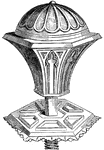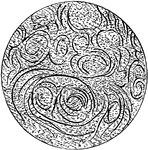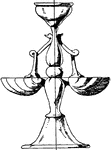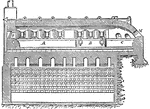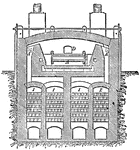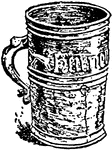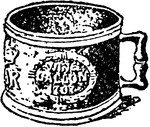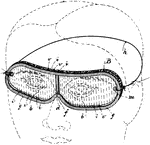
Round Safety Glasses
Safety glasses are usually made with shatter-resistant plastic lenses to protect the eye from flying…
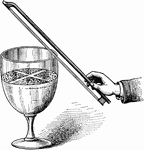
Hand with bow and glass
A hand drawing a violin-bow across the edge of a goblet half-filled with water.

Hero's Fountain
"It consists of a brass dish A and two glass globes B and C. The dish communicates with the lower part…
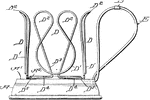
Glass Holder
This glass holder is intended to hold glass cups while drying, the holder features a drip pan at the…
Hydrometer
"It is composed of a hollow ball of glass, or metal, with a graduated scale rising from its upper part,…
Kaleidoscope
A kaleidoscope is an optical instrument invented by Brewster about 1815. It became very popular as a…
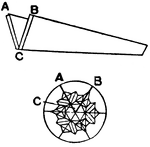
Mirrors in a Kaleidoscope
This illustration shows the arrangement of mirrors in a kaleidoscope (AC and BC), and the patterns formed.

Achromatic Lens
"A double convex lens of crown-glass may be combined with a plano-convex lens of flint-glass so as to…

Refraction of Light through Bi Convex Lens
"...let LN represent a glass biconvex lens, with centres of curvature at C and C', and AB, the incident…
Lenses of Various Forms
"a, prism; b, plane glass; c, spherical lens; d, double-convex; e, plano-convex, f, double-concave;…

Leyden Jar
"...consists of a glass jar coated inside and outside with tinfoil, or some other thin sheet metal,…

Diagram of a Leyden jar
"The most common and, for many purposes, the most convenient form of condenser is the Leyden jar. This…

Glass manufacturing
"Five kinds of glass are made: flint glass, or crystal; crown glass, broad sheet glass, bottle, or green…
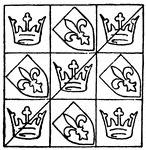
Medieval Tile Pattern
This Medieval Tile circle pattern is a stained glass design. It the oldest process of fitting together…
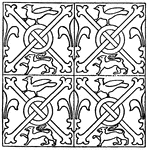
Medieval Tile Pattern
This medieval tile pattern is a stained glass design. It the oldest process of fitting together pieces…
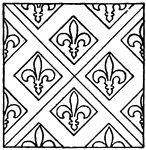
Medieval Tile Pattern
This medieval tile circle pattern is a stained glass design. It the oldest process of fitting together…
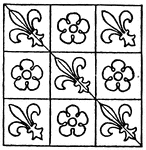
Medieval Tile Pattern
This medieval tile pattern is a stained glass design. It the oldest process of fitting together pieces…
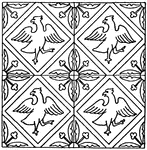
Medieval Tile Pattern
This medieval tile pattern is a stained glass design. It the oldest process of fitting together pieces…
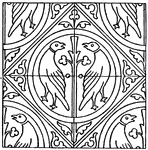
Medieval Tile Pattern
This medieval tile pattern is a stained glass design. It the oldest process of fitting together pieces…

Medieval Tile Pattern
This medieval tile pattern is a stained glass design. It the oldest process of fitting together pieces…

Micrometer
"A plate of glass about 2.5 inches square is ruled with twenty-one lines in one direction .1 inch apart,…
Organ Pipe
"Procure an open organ-pipe, at least one side of which is made of glass. While the pipe is emitting…
Antique Glass Phiale
This Antique glass phiale is a slender vessel without handles. It has an elongated body with a long…
Egyptian Phiale
The Egyptian phiale with cover is a slender vessel without handles. It has an elongated body with a…
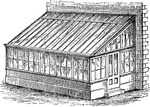
Plant House
"The glass roof is commonly designed so as to form a uniform plane or slope from back to front in lean-to…

Pressure of Liquids
"The tightly fitted piston at the top of a glass vessel of water is driven down. The contained liquid…

Reflecting Prism
"Fresnel next conceived the admirable improvement of employing the principle of "total" or internal…
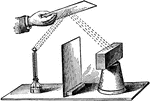
Heat Reflection
"About two feet away from an air thermometer, place an inverted flower pot. Midway between the two,…
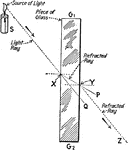
Refraction of Light through Glass
"Illustrating refraction of light from a source through glass, and the appropriate angles of refraction."…

Refraction, air, water, glass
"Let a represent a, b water, and c a piece of glass. The ray d, striking each medium in a perpendicular…
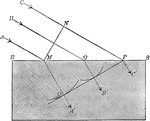
Explanation of Refraction
"Thus, when erher waves that constitute light are transmitted through glass, they are hindered by the…
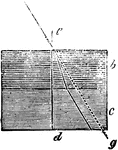
Refraction, glass and water
"Let the medium b be glass, and the medium c, water. The ray a, as it falls upon the medium b, is refracted…
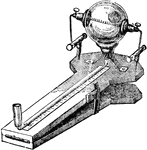
Reibungselectricitat
"This instrument consists of a glass tube of narrow bore, 16 to 17 inches long, to which is blown a…
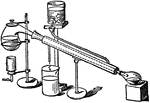
Retort
"A Retort is a vessel in whose chamber an object is subjected to distillation or decomposition by heat,…

Sand Blast Apparatus
"Sand Blast is one of the most wonderful uses of sand, by means of which glass, stone, metals, or any…
Sheet-metal Shears
"The ordinary sheet-metal shears merely resemble very powerful scissors, and, their action being quite…
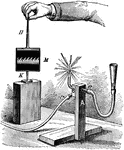
Flame Sonometer
"Apparatus used that will show changes in the flame upon the glass sheet M, when sound is introduced…
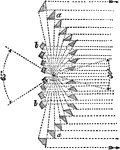
Swans Designs
"Professor Swan's Designs.—Among several ingenious arrangements and new forms of agents proposed by…
Terrestrial Telescope
"The spy-glass or terrestrial telescope avoids the inversion of the image by the interposition of two…

Torsion Apparatus
Apparatus for breaking a plate of glass by torsion, with an example of results produced.

Glass Broken by Torsion
Arrangement of fractures in a large plate of glass which was broken by torsion.

Bottle Type Vase
The vase is an open container, often used to hold cut flowers. It can be made from a number of materials…
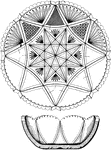
Star Shaped Glass Vessel
A drinking glass, or simply glass, is a drinking vessel, usually made from glass or plastic. Glasses…
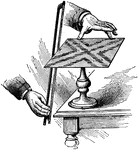
Vibrating Plates
"Support, as shown, a glass or brass plate, square or round, and strew it evenly with fine sand. Place…
